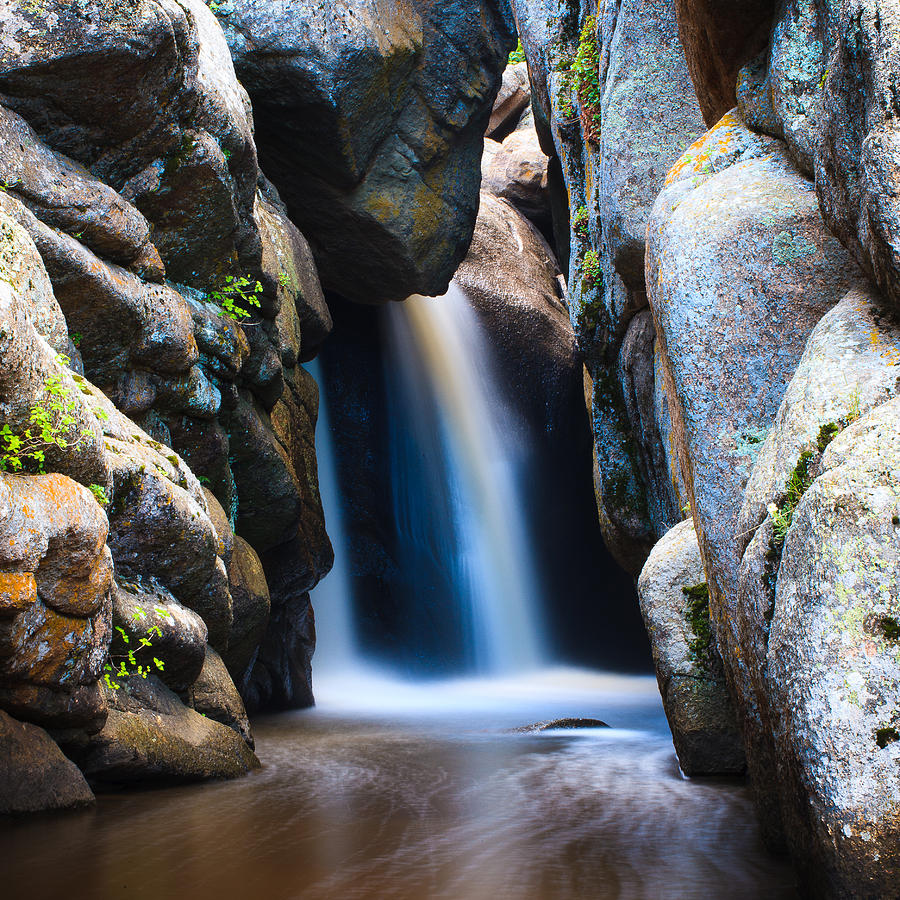
Our numerous outdoor adventures set the stage for the demanding physicality of our expeditions into the deepest gorge on the planet. The next day we drove to Tucson, met Rick, and joined the expedition.

My brother Troy and I fit the bill and it didn’t take much to convince Troy. He was seeking people with hiking and rafting experience. In addition, he was on a quest to find the legendary, “Lost Falls of the Brahmaputra”. He was traveling to Tibet to raft the mighty Yarlung Tsangpo River – the world’s highest and most violent river. Serendipitously, two weeks before my birthday an article appeared in The Arizona Republic featuring a Tucson canyoneer, Rick Fisher. With a life-long interest in Tibetan Buddhism, the year I turned forty (1994) I promised myself I was going to visit this exotic country. This photogrqph was taken on their epic, “The Rainbow Traverse of the Great Bend of the Yarlung Tsangpo”, in 1997. Gil & Troy Gillenwater with Kangla Karpo (22,339’) brilliantly behind. Shortly thereafter the area was again “closed”. In the early 1990’s China grudgingly opened the area to exploration by a fortunate few.

However, the zone around the Hidden Lands remained off-limits to outsiders due to its proximity to the disputed Indian border. In the mid-1980’s China relaxed its grip and began allowing organized “group” tours to Tibet's major cities. Initially to halt colonial expansionism followed by the strangling security of the Communist Chinese occupation. Politics: For centuries the country of Tibet has been politically closed to outside travel. Several early explorers were murdered and in the mid-to late 1800’s and early 1900’s three British military incursions were defeated and chased out of the country, further isolating the area. In addition, the indigenous Monpa and Lopa tribal people possessed the same xenophobic and aggressive attitude. Fiercely territorial, these tribes attacked all who attempted to enter the Hidden Lands. Tribal: Aboriginal Abor and Mishimi tribes straddled the southeastern frontier of Tibet. Until recently, the perpetual cloud cover prevented aerial photography and mapping. Unable to advance, the chronic monsoons unleash torrents of rain and violent storms into the world’s deepest gorge making this area uniquely inhospitable to travel. Lumbering across the plains of India they are thwarted by the Great Bend’s towering peaks. Weather: The tropical Bay of Bengal produces monsoon clouds of epic proportions. Maintaining passable roads and major trails is virtually impossible. Constant geologic pressures produce earthquakes, landslides, fissuring and avalanches. It contains the deepest gorge in the world - 19,714 feet (almost 4 miles). This is the heart of Tibet’s “Hidden Lands”, also known as Pemako. The “thrust-pivot point” of this geologic contortion is the “Great Bend of the Yarlung Tsangpo”. Geography: Colliding tectonic plates make the Himalayas one of the world’s most unstable landscapes. Range was limited rendering both useless in the Himalayas. How was this reclusion possible in a modern world?Ĭommunication: Mobile phones and the internet were in their infancy. At the time of our first expedition in 1994, this was one of the least known and last unexplored “Hidden Lands” on the planet. The Great Bend of the Yarlung Tsangpo River.

The Hidden Lands of the Blossoming Lotus - Tibet Hidden Falls Yet until now, backed by photographs, video, journal entries, interviews and recorded phone conversations, the real story…. No less than a dozen books have chronicled its exploration. It’s a story that was hijacked to capture the world’s attention. It’s a story of risk, chance and intrigue. It’s a story of trespass – of unearthing the planet’s final fabled landscape. It’s a story of a rumored land, sequestered by fate and abandoned by time – The Hidden Lands of Tibet.

There are seven additional contributors from our 1994, 19 expeditions. The primary authors are my brother Troy and I. This web site anticipates a book now in process. My name is Powell Barlow Gillenwater, III.


 0 kommentar(er)
0 kommentar(er)
